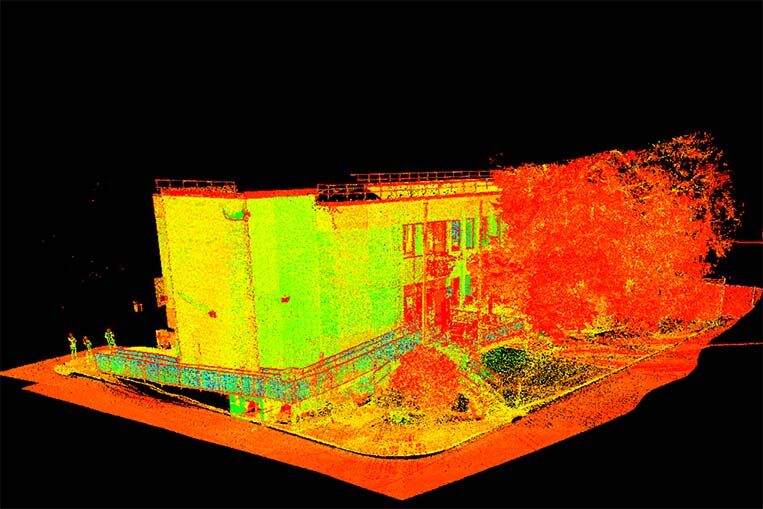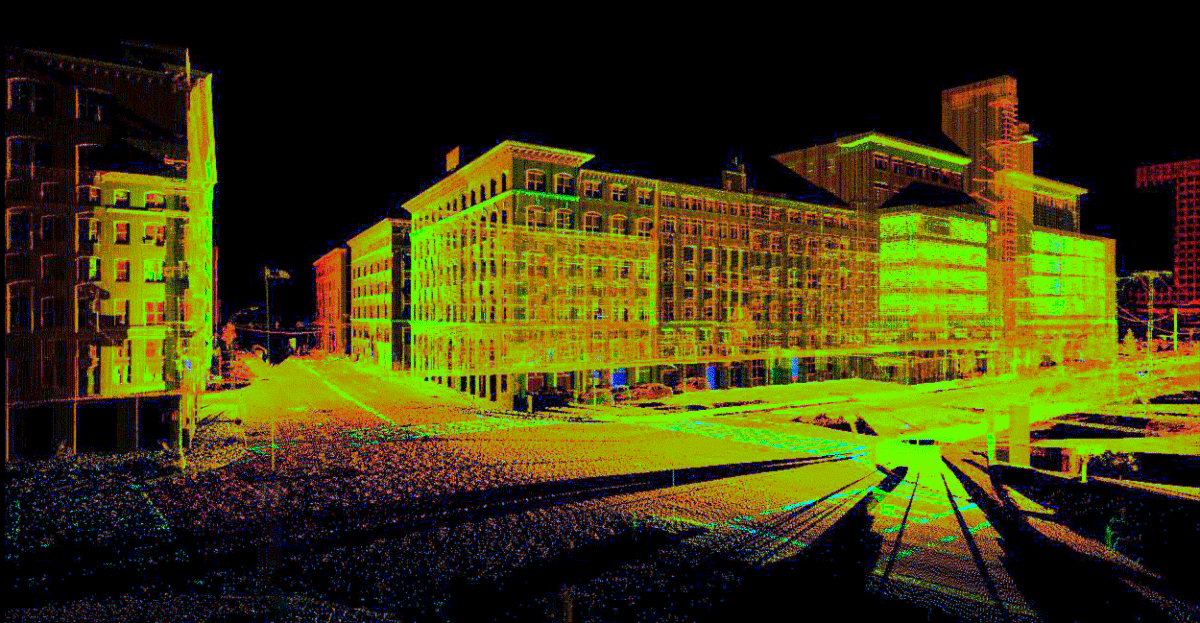Checking out the Applications of 3D Laser Scanning in Archaeology and Cultural Heritage Conservation
The combination of 3D laser scanning technology in archaeology and social heritage conservation marks a considerable advancement in exactly how archaeological sites and artefacts are documented and analyzed. This non-invasive method offers accurate spatial data, exposing complex information that were formerly difficult to capture. As the applications of this modern technology remain to evolve, different effects for documentation, preservation, and education and learning emerge, inviting additional expedition right into its transformative influence on the field.
Comprehending 3D Laser Scanning Technology
3D laser scanning innovation has actually changed the field of archaeology by giving specific and in-depth spatial information. This advanced innovation utilizes laser beams to capture millions of data points from a things or site, developing a highly accurate three-dimensional representation (3D Scanning). The resulting point clouds can disclose intricate information of archaeological sites, structures, and artifacts that could be unseen to the nude eye
Using this modern technology, excavators can document the specific dimensions, shapes, and positions of things with unprecedented accuracy. This technique reduces the risk of human error and removes the need for comprehensive hand-operated measurements. Furthermore, the data collected can be analyzed and shared easily, helping with collaboration amongst researchers. By integrating 3D laser scanning with GIS and various other digital tools, archaeologists boost their ability to picture and interpret historic contexts, leading to much deeper insights right into ancient cultures and atmospheres.
Enhancing Archaeological Documentation
3D laser scanning greatly boosts historical documents via its capacity to create accurate website maps. This technology promotes comprehensive artifact analysis, supplying understandings that traditional methods might overlook. Additionally, it guarantees the conservation of contextual information, which is vital for recognizing the partnerships within historical sites.
Accurate Website Mapping
While standard mapping approaches typically battle with recording the detailed details of historical sites, progressed laser scanning innovation uses an innovative strategy to accurate site mapping. This approach enables archaeologists to create very detailed and accurate three-dimensional depictions of websites, showcasing topographical variants and architectural attributes with exceptional fidelity. The ability to catch numerous data points in a matter of minutes enables comprehensive documentation, which can be easily upgraded and shared amongst researchers. Furthermore, laser scanning assists in the measurement of complex geometries that would be challenging to examine making use of conventional tools. Consequently, this technology enhances the precision of website maps, adding substantially to the conservation and understanding of social heritage sources.
Thorough Artefact Evaluation
Laser scanning innovation substantially improves the evaluation of historical artefacts, providing researchers with extraordinary information and precision. This technique catches complex surface textures, dimensions, and includes that standard paperwork methods might neglect. By producing high-resolution 3D versions, scholars can carefully examine artifacts without the risk of damage fundamental in physical handling. This precision allows for far better comparative research studies, making it possible for professionals to recognize production methods, stylistic variations, and potential cultural relevance. In addition, the capacity to control and picture information in three dimensions facilitates a deeper understanding of artifact functionality and use. On the whole, laser scanning cultivates a much more thorough strategy to archaeological paperwork, making certain that essential details concerning artifacts is maintained for future research study and education.
Conservation of Contextual Information
Protecting contextual data is essential for enhancing archaeological paperwork, as it guarantees that findings are comprehended within their initial ecological and social frameworks. 3D laser scanning technology greatly adds to this conservation initiative by capturing in-depth spatial relationships amongst artifacts, frameworks, and their environments. By creating precise 3D designs, archaeologists can document the precise locations and alignments of objects in situ, facilitating a complete understanding of their context. This innovation makes it possible for researchers to review and analyze websites long after excavation, preserving the integrity of contextual information. Furthermore, digital documents produced with scanning can be shared internationally, fostering joint study and public interaction. Inevitably, preserving contextual information via 3D laser scanning enhances archaeological stories and advertises a much more profound gratitude of cultural heritage.
Conservation of Cultural Heritage Sites
As improvements in technology continue to progress, the conservation of cultural heritage sites has ended up being increasingly dependent on ingenious approaches such as 3D laser scanning. This technology enables the thorough documentation of frameworks, landscapes, and artifacts, recording their exact measurements and spatial relationships in a non-invasive way. By creating high-resolution 3D versions, scientists can assess and monitor deterioration patterns, allowing positive preservation methods.
Additionally, 3D laser scanning helps with the sharing of comprehensive site data with the international area, promoting partnership among chroniclers, archaeologists, and guardians. These designs serve as invaluable resources for education and learning and public involvement, elevating awareness of social heritage problems. Moreover, the digital records developed can safeguard against loss because of environmental aspects, vandalism, or forget. In general, 3D laser scanning stands for a transformative approach to the conservation of social heritage, making sure that these sites link can be researched and appreciated by future generations.

Remediation and Reconstruction Initiatives
The thorough paperwork attained with 3D laser scanning plays a significant function in reconstruction and repair initiatives within archaeology. This technology provides accurate dimensions and high-resolution images, permitting for exact electronic versions of frameworks and artefacts. These models offer as crucial references throughout restoration processes, allowing archaeologists to make and envision the initial layout notified choices regarding materials and methods needed for repair work.
Additionally, 3D laser scanning promotes the reconstruction of harmed or shed components by developing in-depth replicas. This process help in making certain that restorations maintain historic stability while additionally enabling ingenious methods to restore websites. The ability to evaluate wear patterns and architectural weak points through checked information improves understanding of a website's historical context and its usage gradually. 3D laser scanning not only protects the physical elements of cultural heritage yet additionally improves the narrative of background, assisting future remediation endeavors.
Educational and Research Opportunities
The assimilation of 3D laser scanning in archaeology opens significant instructional and research study possibilities. Academic cooperations can improve the understanding of old sites, while specialized training workshops outfit experts with necessary abilities for utilizing this technology. Together, these campaigns promote a richer engagement with historical practices and approaches.
Academic Collaborations in Archaeology
Collective efforts in archaeology have become increasingly essential for progressing both instructional and research chances. By fostering partnerships among universities, research study institutions, and social heritage companies, these cooperations promote the exchange of knowledge and resources, boosting the quality of historical studies. Joint tasks often utilize varied knowledge, enabling innovative techniques and extensive evaluations, particularly in the application of innovations like 3D laser scanning. Such partnerships also advertise interdisciplinary approaches, involving fields such as geography, background, and conservation science. Furthermore, scholastic partnerships commonly cause the development of brand-new educational programs and training programs, preparing the next generation of excavators to efficiently use innovative innovations in their job. Ultimately, these alliances add to the conservation and understanding of social heritage.
Training Workshops for Professionals
Educating workshops for professionals in archaeology are progressively essential for improving skills in the application of sophisticated technologies such as 3D laser scanning. These workshops offer individuals with hands-on experience in making use of innovative devices and software, promoting a much deeper understanding of information capture and analysis procedures. Professionals can learn to produce precise digital models of archaeological sites, which noticeably help in paperwork and conservation efforts. Furthermore, these training sessions frequently include discussions on ideal practices and study, promoting expertise exchange amongst individuals. By buying constant education, experts can remain updated on evolving technologies, ultimately improving the efficiency of their study and cultural heritage preservation initiatives. This dedication to skill improvement is vital for progressing the field of archaeology.
Future Patterns in 3D Laser Scanning for Archaeology
As advancements in technology proceed to reshape different fields, the future of 3D laser scanning in archaeology assures to enhance both the precision and efficiency of website documents and evaluation. Arising trends suggest a growing combination of expert system and artificial intelligence, promoting automated information handling and analysis. This advancement will certainly enable excavators to assess complex datasets faster, leading to faster understandings right into historic contexts.
The combination of drone innovation with 3D laser scanning is likely to increase, enabling comprehensive aerial surveys of historical websites that are challenging to gain access to. The enhancing affordability of scanning tools will democratize accessibility, empowering smaller sized establishments and independent researchers to utilize these tools properly. Additionally, improvements in online fact and augmented truth will certainly allow immersive experiences for public involvement and education, making archaeological searchings for a lot more accessible and interactive. These trends collectively signal a transformative future for archaeology, improving preservation look at this web-site initiatives and expanding the technique's outreach.
Frequently Asked Concerns
Exactly How Much Does 3D Laser Scanning Equipment Price?

What Are the Limitations of 3D Laser Scanning?
The restrictions of 3D laser scanning consist of high costs, potential data processing difficulties, sensitivity to ecological problems, and problem capturing intricate information in complicated surfaces, which can affect the precision and efficiency of scanned representations. (3D Scanning)

Can 3D Laser Scanning Be Made Use Of Underwater?
Yes, 3D laser scanning can be made use of underwater, however it needs specialized equipment and methods to overcome challenges such as water distortion and restricted presence. Successful applications have been demonstrated in marine archaeology and undersea surveys.
The length of time Does a Scanning Project Usually Take?
A scanning job typically takes anywhere from a few days to numerous weeks, depending upon the complexity and size of the location being checked, together with the prep useful content work and post-processing requirements included in the job.
Are There Certain Software Application Requirements for Handling 3D Scans?
Yes, certain software requirements for processing 3D scans include programs with the ability of dealing with large point clouds, such as Autodesk Wrap-up, Cyclone, or MeshLab. These devices promote evaluation, visualization, and assimilation right into different applications efficiently.
The integration of 3D laser scanning modern technology in archaeology and social heritage preservation marks a substantial development in exactly how historic websites and artifacts are documented and evaluated. 3D laser scanning technology has transformed the field of archaeology by offering thorough and specific spatial information. As innovations in innovation proceed to advance, the preservation of cultural heritage websites has become increasingly reliant on cutting-edge techniques such as 3D laser scanning. As developments in innovation continue to improve numerous fields, the future of 3D laser scanning in archaeology assures to enhance both the precision and effectiveness of website documentation and analysis. The integration of drone technology with 3D laser scanning is likely to broaden, allowing extensive airborne studies of historical sites that are hard to accessibility.